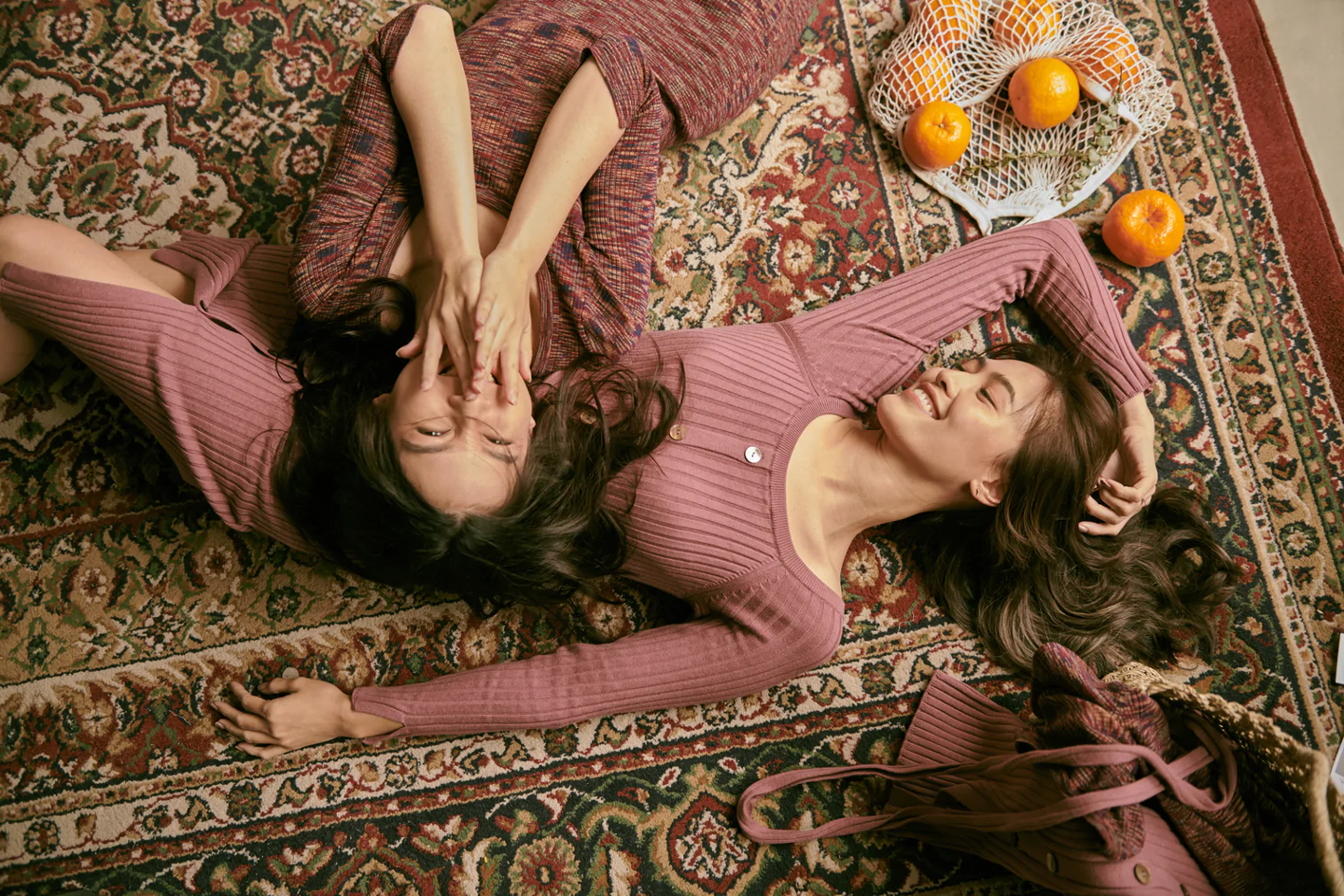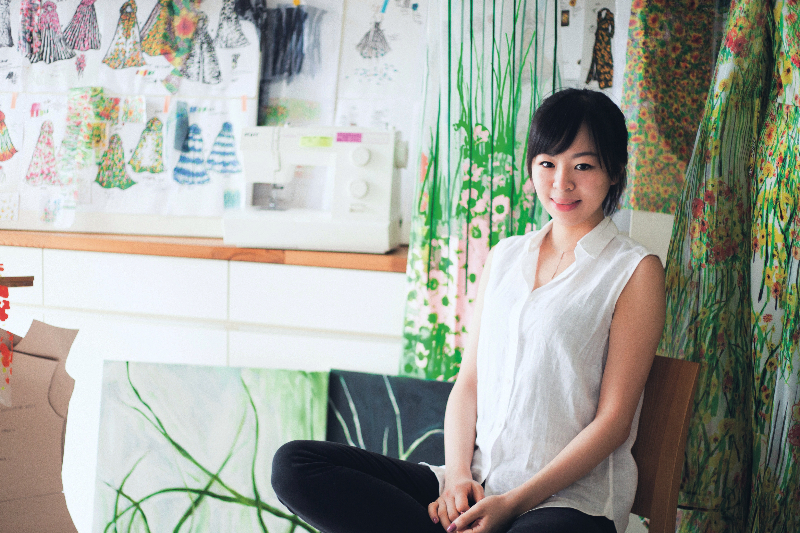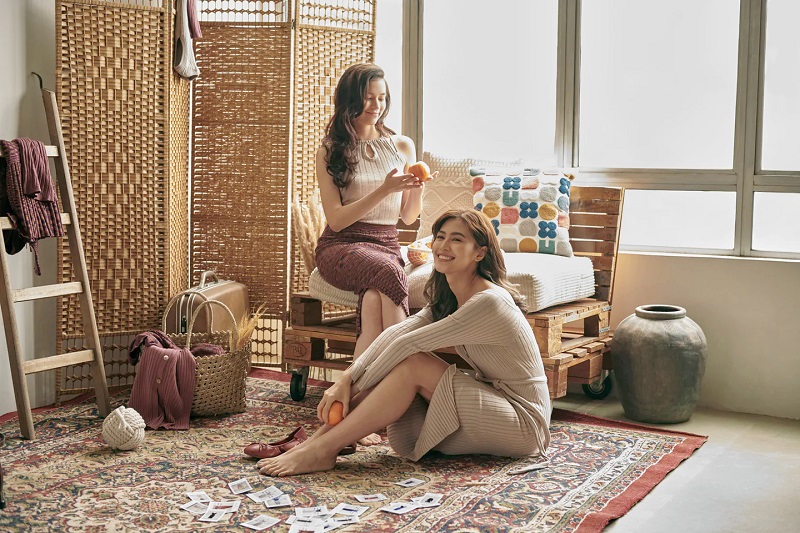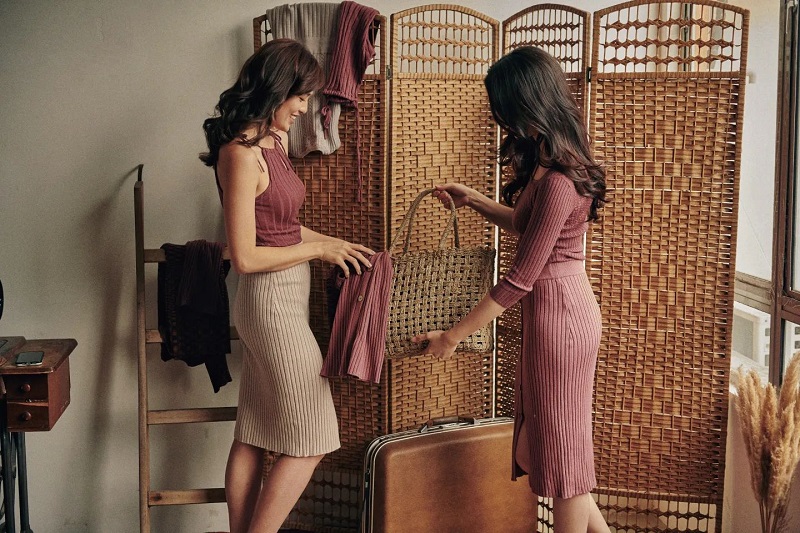
To ensure less wastage and better fit, Hello Ronron pays attention to the construction of the garments and fabrics used (All photos: Hello Ronron)
A fashion design graduate from the prestigious Central Saint Martins in London, Angela Chiang started to develop an interest in the arts when she was a young girl. “I wanted to be a manga artist — I really liked drawing girls and boys going on adventures. I began to discover fabrics and fashion when sketching the characters and their story. I also liked to wear my mum’s makeup and put on her heels.”
Her love for knitted garments was born from the time she studied in England and worked in Taiwan. “Knitwear has a very special characteristic: It hugs your body but does not cling too tightly,” she says. “The weather in those countries was perfect for knitwear. When I returned home, I looked for brands in Malaysia and Singapore, but it was challenging to find those of good quality, made ethically, and yet are not too expensive. I saw a gap I could fill.
“I wanted something that my mum, aunts, friends and I could wear, and that would flatter our shapes but is not too tight, not too sexy, not too revealing; something that is elegant, subtle, feminine and easy to wear on a daily basis. Because we’re living this on-the-go lifestyle — always travelling and commuting.”
What sets Hello Ronron — the brand name indicates a warm welcome to all customers — apart from its competitors is its focus on designing for Southeast Asian women. It uses approaches such as historical studies, scientific body data, production methods as well as feedback and consumer behaviour to collect information on the measurements and materials that would suit women in this region.
angela_chiang.jpg

“We looked into Southeast Asian women’s body types and measurements [for the] head, shoulders, neck, biceps, torso and full-body length. We collected at least 200 body measurements from friends and family, and those by other brands.
“We noticed interesting findings. For example, Southeast Asian women have a slightly longer torso. That’s why the emphasis is always on the waistline, to make it slender. We want to combine research, data and historical references with modern aesthetics to make clothes that are versatile and easy to wear. I want Hello Ronron to be more science- and research-driven rather than simply about aesthetics.”
Registered in 2019, the brand released its first collection only in July this year. The pandemic, while affecting many sectors and businesses, was a blessing in disguise for Hello Ronron, Chiang says. While most people were looking for things to do at home, the fashion enthusiast was studying the market, drawing patterns and reaching out to suppliers with her husband.
She explored countries such as Indonesia, China and Japan to search for factories that could meet their needs — produce limited quantities using responsible production methods — as the brand emphasises sustainable fashion.
It took a while before Chiang could officially launch Hello Ronron because finding suppliers was a great challenge, especially for a tiny business like hers. With a small startup capital, she could not proceed with a large minimum order quantity, a requirement from many manufacturers.
hello_ronron-ss22-.jpg

She explains: “If we lower the MOQ, the cost per item will be very expensive. But we want to balance maintaining good quality and manageable prices so that customers can access the product easily. During the pandemic, a lot of brands from Europe and America stopped placing orders from factories in Asia. So, it was a good time for us to come in, as suppliers considered taking small orders from us.”
To ensure less wastage and better fit, Hello Ronron pays attention to the construction of the garments and fabrics used. It opts for fully fashioned knitwear instead of cut-and-sew knitwear, which “can reduce waste up to 30%”, claims Chiang. “Using this method, the seams are joined neatly, as each of the pieces at the sleeve and body are knitted from yarn to form a singular shape. Then they are sewn together by hand or with a machine.”
As for materials, Chiang chooses a blend of cotton, viscose and spandex. The combination of the first two ensures breathability and a voluminous texture, while spandex stretches the knitwear to hold the body just right.
Customers sometimes ask why Hello Ronron does not use pure cotton or linen, since these are fully natural materials. “It’s not always good to use fully natural materials. For example, if you mix viscose with nylon, the fabric is stronger and that makes it easier to maintain for everyday wear,” Chiang says, adding that how one washes and cares for one’s clothes is also important in practising sustainability.
Given our tropical climate, it is understandable that locals keen to try Hello Ronron’s knits are sceptical about whether they are comfortable. “My friends and I wore the clothes to walk around in the Klang Valley and we would be out for at least an hour just to see how much we perspired. I’m pretty confident the materials we use are made specifically for Southeast Asia’s weather because the clothes are breezy and breathable.”
hello_ronron_2.jpg

While she managed to overcome initial challenges, another problem occurred after the brand launched its first collection. Chiang realised it was not ideal to run the business with her husband alone. “There’s just so much one person can do. The things that take up my time more than I expected are customer support, quality control, and content marketing. I thought everything would be under control.
“Right now, I find educational content hard to produce. We don’t want to just take pretty pictures and post them. We want to make content that can teach customers to look after their clothes and introduce them to different kinds of knitwear. So, this took a toll on my work schedule.”
Recently, Chiang welcomed two new team members to help with the designing process, such as tracing patterns and sampling. She wants to hire someone specifically for digital content marketing.
Hello Ronron is working on producing loose-fitting knitwear, such as maxi dresses and skirts, and making more A-line pieces for those who are conscious about showing too much of their curves. “We will always have conversations with customers to constantly improve our products,” Chiang says.
This article first appeared on Nov 7, 2022 in The Edge Malaysia.


